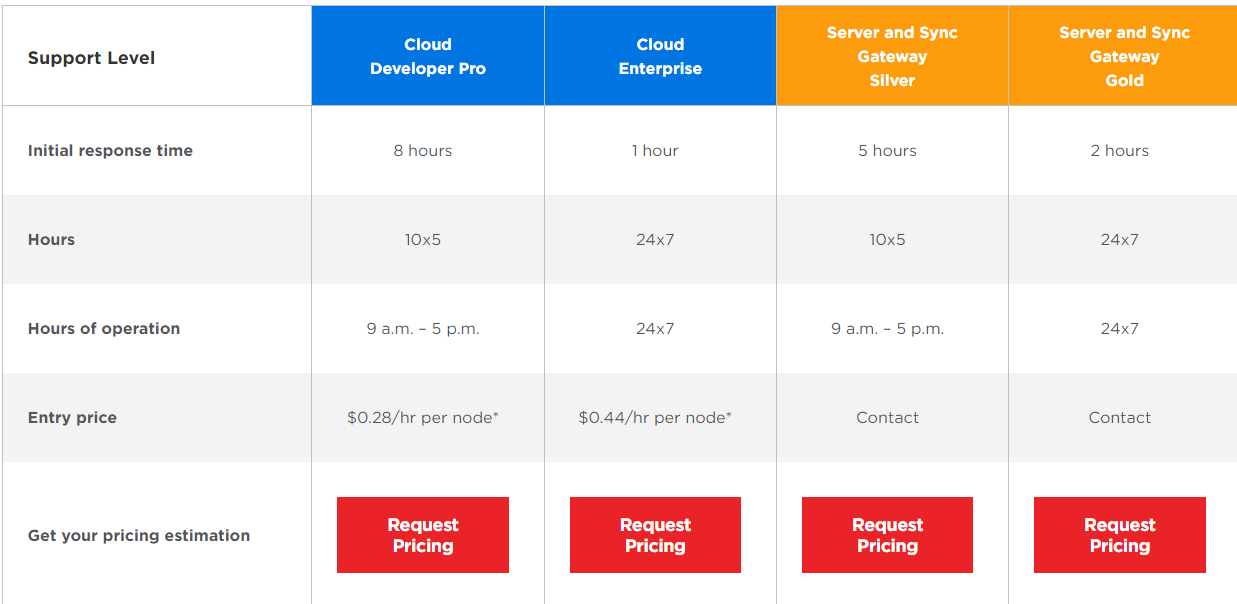This Couchbase pricing section is effective for several reasons:
1. Clear Hierarchy and Visual Appeal:
- Clear Column Headers: The table is well-organized with clear column headers indicating the different support levels.
- Distinct Color Coding: Each support level is represented by a distinct color, making it easy to visually differentiate between them.
- Consistent Formatting: The information is presented in a consistent and easy-to-read format.
- Prominent Call to Action: The “Request Pricing” buttons are large, visually distinct, and consistent across all columns, encouraging user engagement.
2. Value-Based Differentiation:
- Support Level Focus: The table clearly focuses on the differences in support levels, allowing users to choose the level that best suits their needs.
- Key Metrics: The table highlights key metrics like initial response time, hours of operation, and entry price, allowing for easy comparison.
3. Transparent Pricing (Partial):
- Entry Price for Some Tiers: The “Cloud Developer Pro” and “Cloud Enterprise” tiers have clear entry prices, providing some level of transparency.
- Request Pricing for Others: The “Server and Sync Gateway” tiers use “Contact” and “Request Pricing,” indicating a more customized pricing approach.
4. Addressing Different User Needs:
- Varied Support Levels: The different support levels cater to different user needs, from basic support to 24/7 enterprise-level support.
- Clear Comparison: The table format allows for easy comparison of the different support levels.
5. Strategic Use of Information:
- Focus on Support: The table emphasizes the importance of support, a key factor for many SaaS customers.
- Clear Call to Action: The “Request Pricing” buttons encourage users to take the next step and learn more.
- Note on Per Node Pricing: The asterisk (*) next to the entry prices indicates that the pricing is per node, providing additional clarity.



